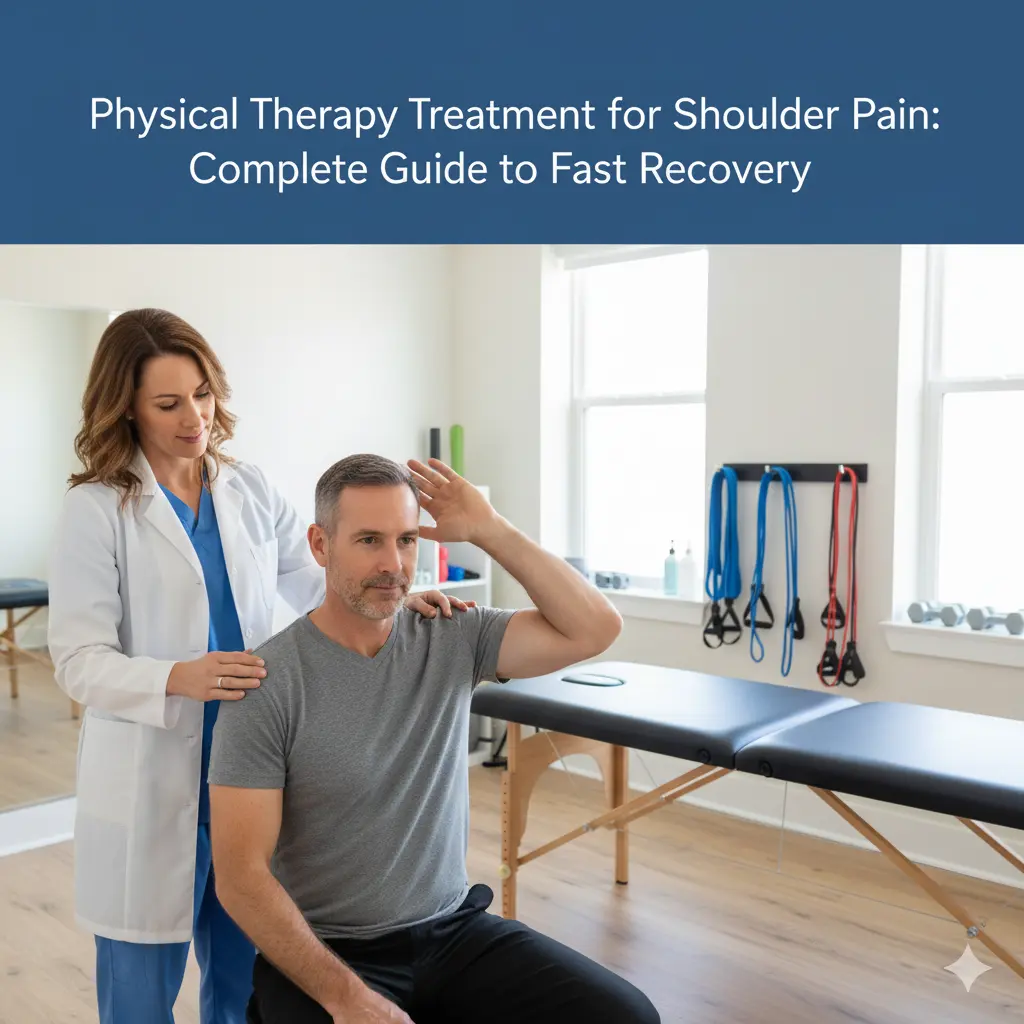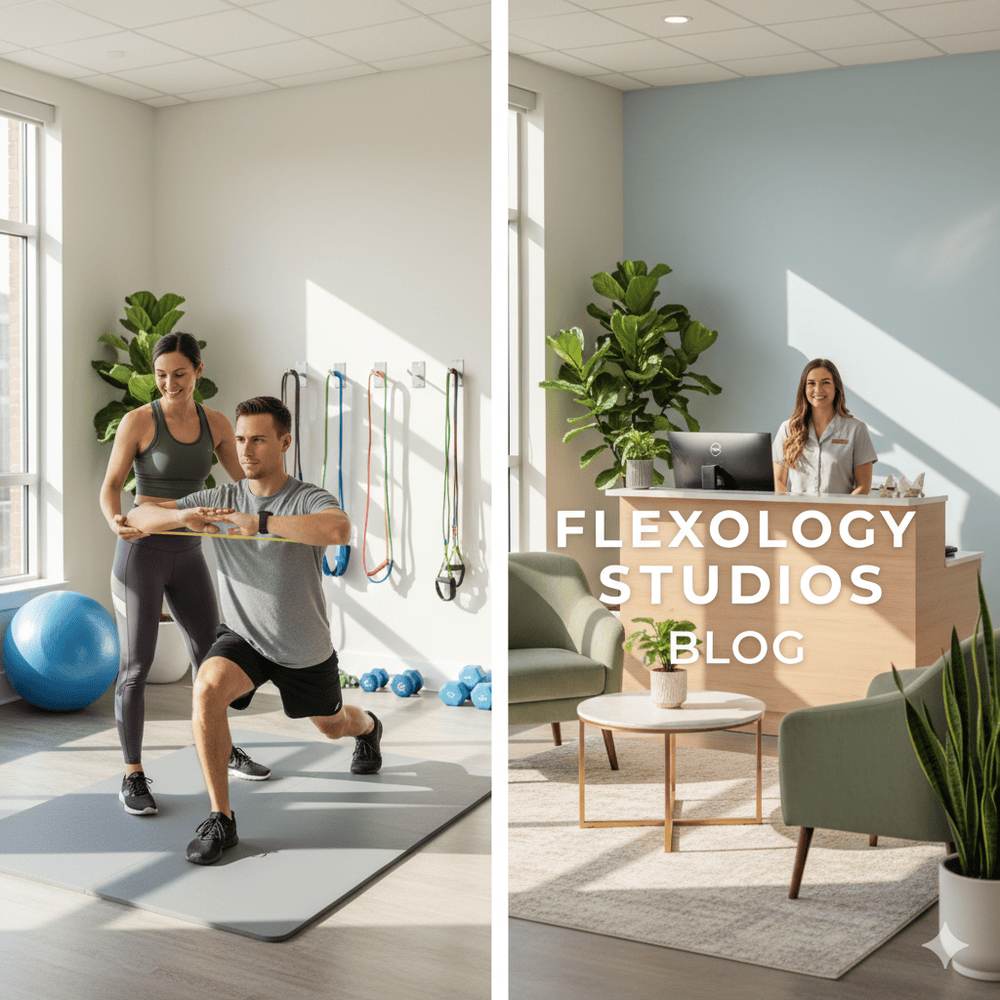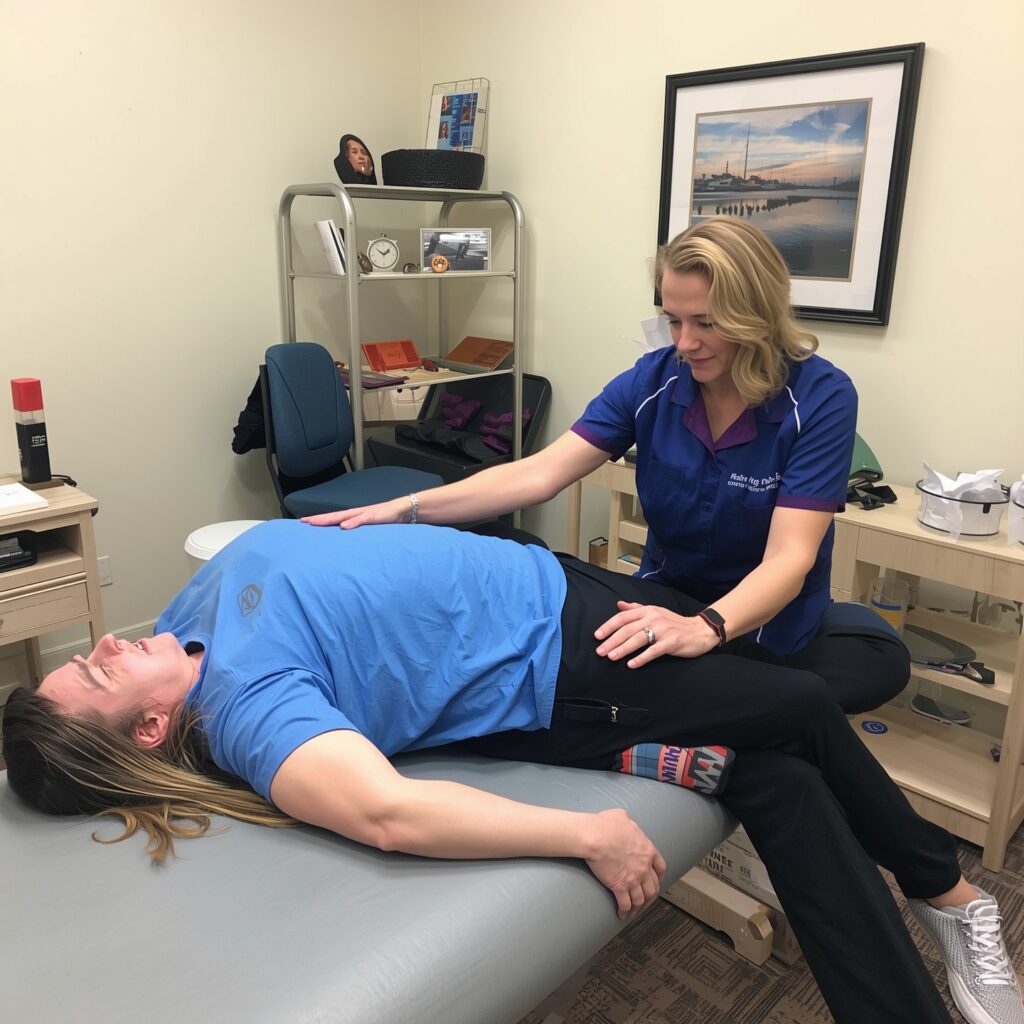Shoulder pain can be more than just a minor inconvenience it can affect your daily activities, sleep quality, and overall lifestyle. Whether it’s caused by an injury, overuse, poor posture, or medical conditions, physical therapy treatment for shoulder pain is often the most effective path toward recovery. At Flexology Studios, our team focuses on restoring strength, flexibility, and mobility through personalized therapy programs.
In this guide, we’ll cover everything you need to know about shoulder rehabilitation, including the best exercises, recovery timelines, and how physical therapy can help you regain pain-free movement.
Understanding Shoulder Pain
The shoulder is one of the most mobile joints in the body, making it more prone to injury and strain. Common causes of shoulder pain include:
- Rotator cuff injuries
- Frozen shoulder
- Tendonitis or bursitis
- Shoulder impingement
- Arthritis
- Postural imbalances
Without proper care, shoulder issues can worsen and lead to chronic pain. That’s why shoulder rehabilitation therapy is crucial for long-term healing.
Why Physical Therapy Is the Best Solution for Shoulder Pain
Unlike temporary fixes such as pain medications, physical therapy addresses the root cause of the problem. Here’s why it works:
- Restores mobility: Gentle stretching and mobility-focused exercises improve range of motion.
- Strengthens muscles: Targeted strengthening prevents future injuries.
- Reduces pain naturally: Techniques such as manual therapy, massage, and guided exercises provide relief without side effects.
- Customized recovery plan: Therapists create a program tailored to your unique condition.
At Flexology Studios, we design therapy sessions that combine evidence-based methods with personalized care.
The Role of Physical Therapy in Rotator Cuff Injuries
One of the most common shoulder issues is a rotator cuff injury. These injuries may result from sports, repetitive motions, or sudden trauma. Physical therapy for rotator cuff injury includes:
- Strengthening stabilizer muscles
- Gentle stretching for flexibility
- Manual therapy for pain relief
- Progressive exercises to restore function
Patients who follow structured therapy often avoid surgery and recover faster than those who don’t.
Best Physical Therapy for Shoulder Pain
When it comes to choosing the best physical therapy for shoulder pain, it’s all about finding the right combination of treatments. At Flexology Studios, our approach includes
- Manual therapy techniques – Soft tissue massage and joint mobilizations
- Therapeutic exercises—to strengthen weak muscles and balance shoulder movement
- Posture correction—Addressing rounded shoulders and forward head posture
- Heat and cold therapy—for pain management and inflammation control
This multi-step approach ensures faster recovery and lasting results.
Shoulder Pain Physical Therapy Exercises
Consistency with exercises is key to recovery. Here are some of the most effective shoulder pain physical therapy exercises:
1. Pendulum Swing
- Lean forward and let your arm hang.
- Swing it gently in small circles.
- Great for increasing mobility.
2. Wall Angels
- Stand against a wall with arms bent.
- Slowly raise and lower arms as if making a snow angel.
- Improves posture and mobility.
3. Resistance Band External Rotation
- Anchor a band at elbow height.
- Pull the band outward, keeping your elbow close to your side.
- Strengthens rotator cuff muscles.
4. Sleeper Stretch
- Lie on your side with your arm bent.
- Use your other hand to gently press your forearm downward.
- Stretches the back of the shoulder.
Performing these exercises regularly under professional guidance can prevent re-injury and promote long-term healing.
Shoulder Mobility Physical Therapy
Mobility is critical for shoulder function. Shoulder mobility physical therapy focuses on:
- Stretching tight muscles
- Improving joint flexibility
- Preventing stiffness (especially after surgery or immobilization)
At Flexology Studios, we use targeted mobility drills that allow patients to return to daily tasks without discomfort.
When to Start Physical Therapy for Shoulder Pain
The best time to start is as early as possible. Delaying treatment often leads to worsening stiffness and prolonged pain. Seek physical therapy if you experience:
- Pain lasting more than a week
- Difficulty lifting or rotating your arm
- Shoulder weakness or instability
- Night pain disrupting sleep
Expected Timeline for Recovery
Every patient heals differently, but here’s a general recovery timeline:
- 2–4 weeks: Pain reduction and improved range of motion
- 4–8 weeks: Strengthening phase with targeted exercises
- 8–12 weeks: Advanced strengthening and functional training
- 3–6 months: Full recovery for most patients
Sticking to the prescribed exercise program is essential for lasting results.
Preventing Shoulder Pain After Recovery
Once you’ve recovered, it’s important to maintain your progress. Prevention strategies include:
- Regular stretching
- Strength training for stabilizer muscles
- Practicing good posture
- Avoiding repetitive strain
- Taking breaks during work or sports
Why Choose Flexology Studios for Shoulder Rehabilitation?
At Flexology Studios, our focus is on long-term recovery and personalized care. Here’s why patients trust us:
- Experienced physical therapists
- Tailored treatment programs
- Advanced equipment and techniques
- Supportive and motivating environment
We believe in treating the whole person, not just the pain.
FAQs About Physical Therapy Treatment for Shoulder Pain
1. How long does physical therapy for shoulder pain take?
Recovery usually takes between 6 and 12 weeks, depending on the severity of the condition and how consistently you follow your exercise plan.
2. Can physical therapy prevent the need for shoulder surgery?
Yes, in many cases. With conditions like rotator cuff injuries or frozen shoulder, shoulder rehabilitation therapy often avoids the need for invasive surgery.
3. Is physical therapy painful?
Some exercises may feel uncomfortable at first, but therapy should not cause sharp or severe pain. The goal is to gradually improve movement and reduce discomfort.
4. Can I do physical therapy exercises at home?
Absolutely. Many shoulder pain physical therapy exercises can be done at home, but it’s important to learn the correct techniques from a therapist to avoid strain.
5. When should I see a therapist instead of resting at home?
If your pain lasts more than a week, restricts movement, or interferes with daily activities, it’s time to start professional shoulder mobility physical therapy.
6. Will insurance cover my physical therapy sessions?
Most insurance plans cover physical therapy when prescribed by a doctor, but coverage varies. It’s best to check with your provider.
7. Can physical therapy help with arthritis-related shoulder pain?
Yes. Gentle mobility exercises, posture correction, and strengthening routines can significantly reduce arthritis-related shoulder discomfort.
Conclusion
Shoulder pain can limit your daily life, but with the right approach, recovery is possible. Physical therapy treatment for shoulder pain is proven to reduce pain, restore mobility, and prevent future injuries. By committing to shoulder rehabilitation therapy, following a consistent exercise plan, and working with expert therapists, you can enjoy long-lasting relief.
At Flexology Studios, we’re dedicated to helping you achieve a pain-free, active lifestyle. Don’t let shoulder pain hold you back start your recovery journey today.



